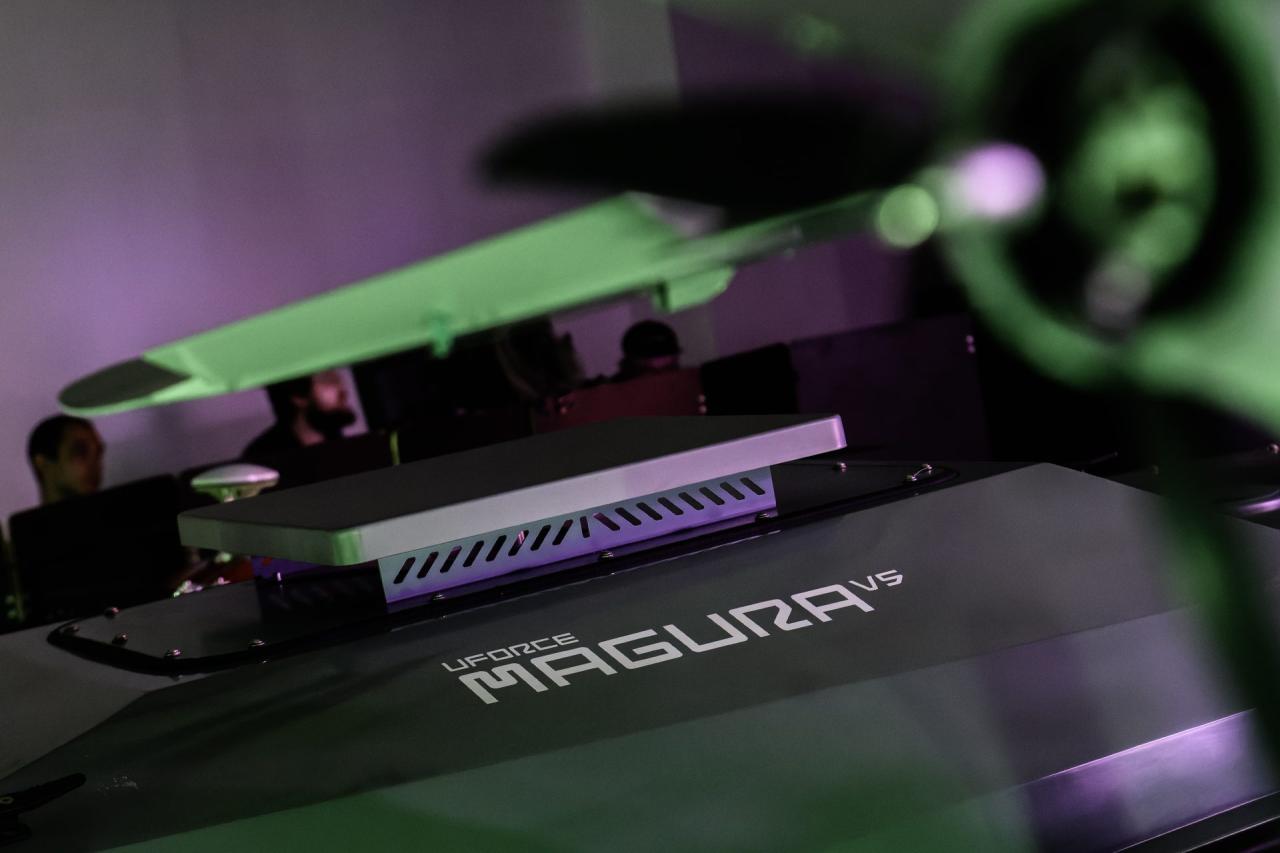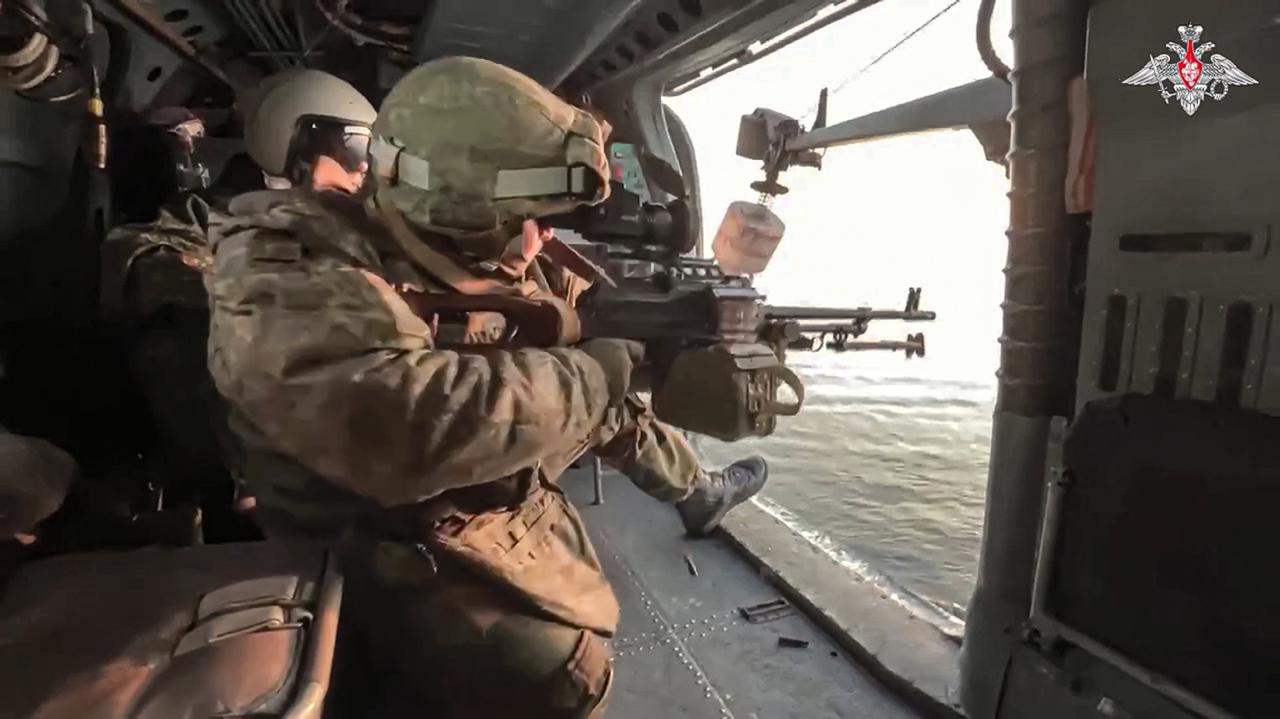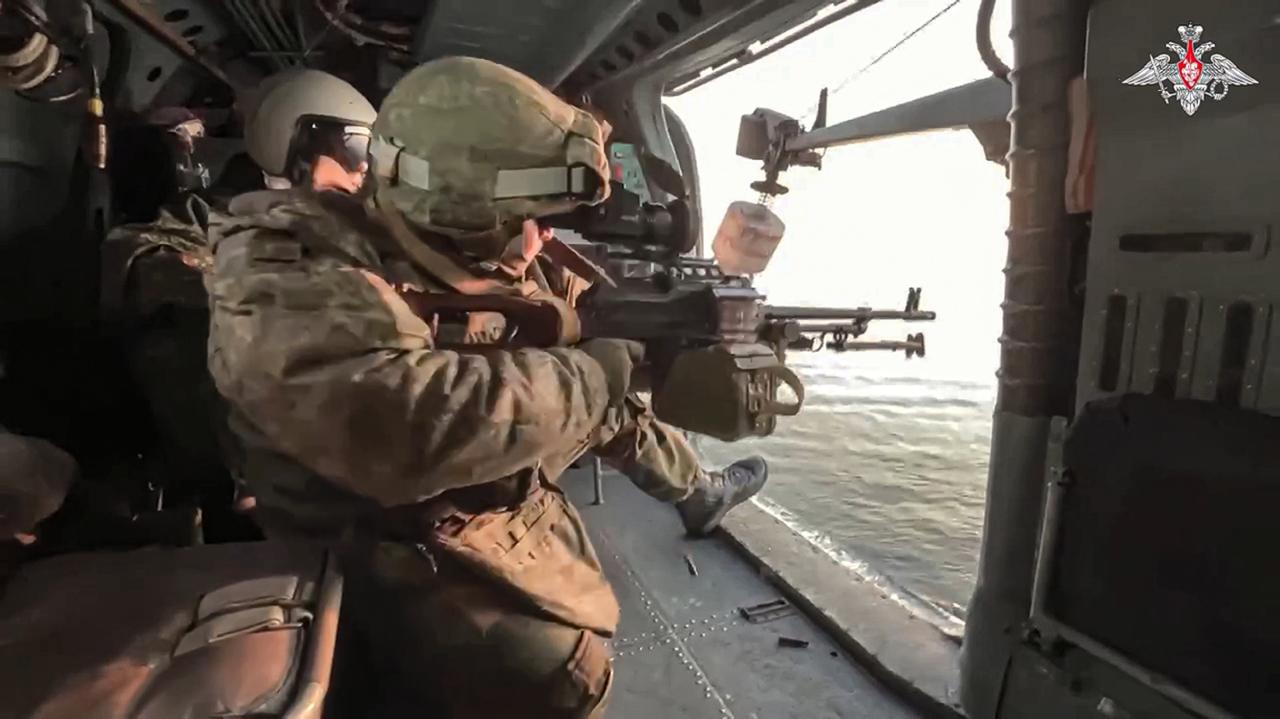Ukrainian sea drones are rapidly changing naval warfare. These unmanned vessels, ranging from small, expendable craft to larger, more sophisticated platforms, are proving surprisingly effective against larger, more expensive warships. This exploration delves into their technology, operational use, design, impact, and future potential, revealing both their tactical advantages and the wider strategic implications of their deployment.
We’ll examine the evolution of Ukrainian drone technology, comparing it to similar systems used by other nations. We’ll also discuss the engineering challenges involved in their creation and maintenance, exploring the materials and components used in their construction. Finally, we’ll look at the international implications of this technology, considering both the positive and negative consequences of its proliferation.
Ukrainian Sea Drone Technology
Ukraine’s burgeoning sea drone program represents a significant shift in naval asymmetric warfare capabilities. Leveraging readily available technology and adapting it for maritime applications, Ukraine has demonstrated innovative use of unmanned systems in the ongoing conflict. This exploration delves into the technology, operational aspects, design considerations, and future implications of these drones.
Current State of Ukrainian Sea Drone Technology
Ukrainian sea drone technology encompasses a range of platforms, from smaller, expendable units to larger, more sophisticated systems. Capabilities include reconnaissance, mine-laying, anti-ship attacks, and electronic warfare. The exact specifications of many models remain classified, but publicly available information and open-source intelligence suggest a diverse and evolving arsenal.
Evolution of Ukrainian Sea Drone Technology
Ukraine’s sea drone development likely accelerated significantly following the 2014 annexation of Crimea and the ongoing conflict. Initial efforts may have focused on adapting commercially available platforms. Subsequent development has likely involved incorporating lessons learned from operational deployments and integrating more advanced technologies, leading to more capable and resilient systems.
Comparison with Other Nations’ Sea Drones, Ukrainian sea drone

Compared to larger naval powers, Ukraine’s sea drone technology may be less sophisticated in terms of overall range, payload capacity, and autonomy. However, Ukraine’s program showcases a focus on cost-effectiveness, adaptability, and swarm tactics, making it a unique and potentially impactful approach to naval warfare. The focus on readily available components and rapid development cycles allows for quicker adaptation to evolving threats.
Specifications of Various Ukrainian Sea Drone Models
| Name | Size (approx.) | Payload (approx.) | Range (approx.) | Propulsion | Guidance System |
|---|---|---|---|---|---|
| Example Drone 1 | Small, boat-like | Explosives, sensors | 10-20 km | Electric motor | GPS, inertial navigation |
| Example Drone 2 | Medium, surface vessel | Larger explosive payload | 50-100 km | Internal combustion engine | GPS, pre-programmed route |
| Example Drone 3 | Larger, semi-submersible | Significant payload | 100+ km | Hybrid propulsion | Satellite-aided navigation |
| Example Drone 4 (Hypothetical) | Small, underwater | Sensors, small warhead | 5-10 km | Electric motor | Acoustic homing |
Operational Use of Ukrainian Sea Drones
Documented operational deployments of Ukrainian sea drones have primarily targeted Russian naval assets in the Black Sea. These operations have involved both individual drone attacks and coordinated swarm attacks, highlighting the potential for disruptive effects.
Tactical Advantages and Disadvantages
Tactical advantages include the relatively low cost of the drones, their expendable nature, and their ability to overwhelm defenses through swarm tactics. Disadvantages include vulnerability to countermeasures, limited range and payload capacity compared to larger vessels, and reliance on effective intelligence and targeting.
Strategic Implications
The strategic implications of Ukrainian sea drone usage include the potential to disrupt Russian naval operations, deter further aggression, and demonstrate the effectiveness of asymmetric warfare strategies. It also highlights the importance of naval defense against smaller, less expensive threats.
Potential Future Scenarios
- Increased use in coastal defense and harbor protection.
- Integration with other naval assets for enhanced reconnaissance and surveillance.
- Development of more advanced autonomous capabilities, including AI-driven targeting.
- Expansion of payload capabilities to include electronic warfare systems.
- Wider adoption by other nations facing similar security challenges.
Design and Engineering Aspects

The design of Ukrainian sea drones likely prioritizes simplicity, robustness, and ease of production. Materials selection and component sourcing are crucial, given the need for readily available parts and the potential for damage in operational scenarios.
Key Design Features
Key design features likely include modularity for ease of maintenance and repair, robust construction to withstand harsh maritime environments, and simple, reliable propulsion and guidance systems. Emphasis on low-cost components allows for large-scale deployment and replacement.
Materials and Components
Common materials likely include fiberglass or other composite materials for the hull, readily available off-the-shelf electronic components, and commercially available propulsion systems. This approach minimizes reliance on specialized or hard-to-source parts.
Engineering Challenges
Engineering challenges include maintaining operational reliability in harsh marine conditions, ensuring effective communication and control over long ranges, and developing robust countermeasures against enemy detection and disruption. Miniaturization of components and power management are also key considerations.
Conceptual Diagram of a Typical Ukrainian Sea Drone
Imagine a small, unmanned surface vessel, roughly the size of a large personal watercraft.
The hull is constructed from fiberglass reinforced plastic.
A small, reliable internal combustion engine or electric motor provides propulsion.
Ukrainian sea drones are making waves, showcasing innovative naval technology. Think about the scale though – imagine the sheer spectacle of hundreds, maybe thousands of drones at the shanghai drone show 2027 , a completely different application, but equally impressive. The precision and coordination needed for both, from sea-based attacks to aerial displays, are fascinating to compare.
Ukrainian drone tech might even inspire future drone show innovations.
A GPS receiver and inertial navigation system provide guidance.
A simple radio communication system allows for remote control and data transmission.
The payload bay can accommodate explosives, sensors, or other equipment.
Impact and Future Developments
Ukrainian sea drones have demonstrated a significant impact on naval warfare tactics and strategies, highlighting the effectiveness of asymmetric warfare capabilities and the vulnerability of larger, more expensive naval assets to relatively inexpensive drone attacks.
Potential Technological Advancements
Future advancements will likely focus on increasing range and payload capacity, improving autonomy and intelligence capabilities, and enhancing stealth features to evade detection. Integration of AI-driven decision-making and swarm coordination are also potential areas for development.
Improvements to Drone Capabilities
Improvements to range could involve the use of more efficient propulsion systems or the development of hybrid propulsion technologies. Payload capacity could be increased through miniaturization of components and improved structural design. Enhanced autonomy will allow for more complex missions and reduced reliance on operator control. Stealth improvements could involve the use of low-observable materials and advanced camouflage techniques.
Timeline of Predicted Advancements
Over the next 5 years, expect significant improvements in autonomy, payload capacity, and sensor integration. Within 10 years, expect the emergence of more sophisticated AI-driven systems, enhanced swarm capabilities, and potentially the integration of advanced weaponry and electronic warfare systems.
International Implications
The successful employment of Ukrainian sea drones has significant international implications, prompting other nations to consider similar asymmetric warfare strategies. The potential for proliferation of this technology to other countries raises concerns about its misuse and the potential for escalation of conflicts.
Proliferation and Ethical Considerations
The relatively low cost and ease of production of Ukrainian-style sea drones make proliferation a real possibility. Ethical considerations involve the potential for unintended civilian casualties and the lack of human oversight in autonomous systems. The ethical implications of using sea drones in warfare are similar to those of other unmanned systems, emphasizing the need for responsible development and deployment.
Ukrainian sea drones are proving to be surprisingly effective, showcasing a different kind of naval warfare. It’s a far cry from the dazzling spectacle of a coordinated drone display, like the one you can see at the shanghai new year drone show , but both highlight the evolving role of unmanned technology. Think of the contrast: precise, targeted strikes versus mass artistic choreography – both using drones.
The Ukrainian drones are changing the game, one sea mission at a time.
Hypothetical Scenario of Widespread Adoption

Imagine a future where numerous nations deploy swarms of inexpensive sea drones for various purposes. Coastal regions could become highly contested zones, with constant drone skirmishes. This could lead to an arms race, with nations investing heavily in counter-drone technologies. The potential for accidental escalation and miscalculation is significant, potentially destabilizing global security.
Wrap-Up
Ukrainian sea drones represent a significant shift in naval power dynamics. Their relatively low cost, ease of deployment, and surprising effectiveness are forcing a reevaluation of traditional naval strategies. Future advancements in autonomy, payload capacity, and stealth technology will only amplify their impact. The continued development and deployment of these drones will undoubtedly shape the future of naval warfare, prompting both innovation and adaptation from global naval forces.
Answers to Common Questions
What are the primary targets of Ukrainian sea drones?
Primarily, larger naval vessels like warships and landing craft. They’ve also been used against coastal infrastructure.
How are Ukrainian sea drones guided?
Guidance systems vary depending on the model, but common methods include GPS, inertial navigation, and potentially satellite guidance for longer-range missions.
What kind of payloads do they carry?
Payloads can range from explosives for attacking ships to sensors for reconnaissance and surveillance.
Ukrainian sea drones are making waves, showcasing innovative naval technology. Thinking about regulations, it’s worth checking out the changes with new drone rules Canada , as similar advancements might influence future international drone laws. The impact of these Ukrainian drones on global naval strategy is significant, prompting a need for updated regulations worldwide.
What is the lifespan of a Ukrainian sea drone?
Lifespan depends on the model and mission; some are designed as single-use weapons, while others are intended for multiple deployments.
